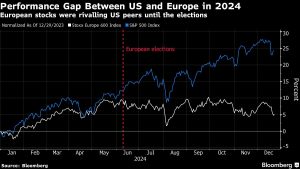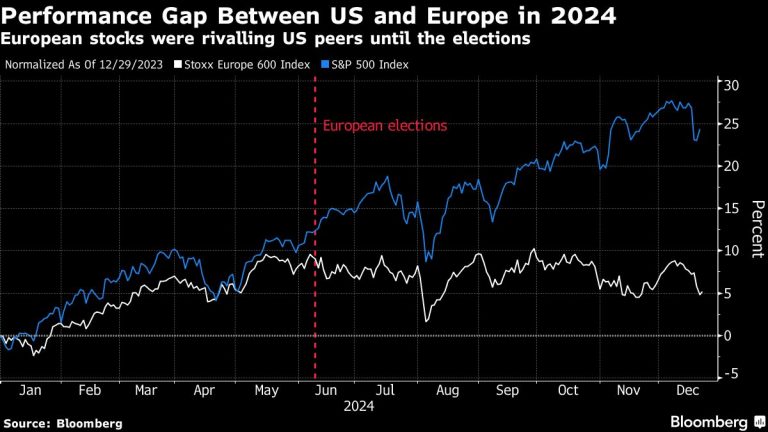 PA
PAA man has been jailed for at least 26 years after killing his partner’s two-year-old daughter and abandoning her body in a locked bathroom.
Scott Jeff, 24, will serve a minimum term as part of a life sentence for the murder of Isabella Jonas-Wheildon, who was found with “traumatic injuries” in Ipswich on 30 June 2023.
Her mother, Chelsea Gleason-Mitchell, 24, received 10 years in prison after admitting causing or allowing the death of a child.
Ipswich Crown Court heard how the couple, from Bedfordshire, had wheeled Isabella’s dead body around in a pushchair for days after her death on 26 June before fleeing from Ipswich.
 Suffolk Police
Suffolk PoliceWarning: This article features details of physical abuse
The pair were also sentenced to three months each for cruelty to a child in relation to cannabis and six months each for cruelty to a child in relation to cocaine, to run concurrently.
Gleason-Mitchell was found not guilty of murder at a trial in November.
High Court judge Mr Justice Neil Garnham said: “There she was, a two-year-old child, totally dependent on the two of you.
“Jeff, you subjected that defenceless little girl to a brutal campaign of violence and those attacks were monstrous. She feared what was going to happen next.
“Gleason-Mitchell, you are a weak and spineless person and pathetically desperate. Isabella must have looked to you for your help but you did nothing.
“It is perfectly clear to me that her killing has had a devastating effect on her family and the lives of all of them will be permanently disfigured.
“You two are responsible for all this pain.”
When speaking in court, Thomas Wheildon, Isabella’s father, said: “Isabella was the most wonderful addition to my life – she was an extension of me and I miss her every day.
“When she died a part of me died and my entire world came crashing down – it has completed changed me and I am a shell of the man I once was.
“Isabella was perfect in every way and had a life so full of promise, but now all my dreams for her will never be realised – I’ll never take her for her first day of school.
“Her life was tragically cut short by you wicked, sadistic and vile people. I am so sorry Isabella. I am sorry for not being able to protect you.”
‘Tragic end’
During a seven-week trial the court heard how the toddler suffered “psychological torment” and “physical trauma” at the hands of Jeff and his “evil temper”.
Frustrated over Isabella’s struggles with potty training, he would repeatedly kick and stamp on her and punish her with cold showers, all while her mother “stood by and did nothing”.
The brutal beatings resulted in Isabella suffering injuries usually seen in “high-velocity traffic accidents” or when someone has been “kicked by a horse”.
Bone pathologist Prof Anthony Freemont told the court, during the couple’s trial, that he had never before seen such a severe pelvic injury in a child in his 40-year career.
 Ben Parker/BBC
Ben Parker/BBCSmiley, blonde-haired Isabella, who was described as “engaging and happy”, died from a bone marrow embolism as a consequence of skeletal trauma.
“The level of injuries were just truly, truly horrific,” said Det Ch Insp Craig Powell, from Suffolk and Norfolk police forces’ joint investigation team.
“The overall level of abuse and the way in which poor Isabella suffered is truly shocking and the actions of the pair were abhorrent.
“It’s not lost on any of us as police officers and parents how shocking it is and the escalation and the speed with which this developed and led to such a tragic end.”
‘Living a normal life’
The abuse started shortly after the pair, while under the influence of drugs, left their hometown of Biggleswade, Bedfordshire, and fled to the Norfolk coast.
After staying at the St George Hotel in Great Yarmouth, they slept inside a tent on a beach in Caister-on-Sea before spending three nights at a caravan park.
By 19 June, Jeff and Gleason-Mitchell had moved into the East Villas housing complex in Sidegate Lane, Ipswich, having lied about fleeing domestic violence.
Seven days later, Isabella was dead. But, instead of reporting it to the police, the couple decided to act as if she was alive and continued “living a normal life”.
Today the court heard how her body was “treated with disdain” after the death and had a “bag of shopping casually placed” on top of it in the pushchair.
In “macabre” CCTV footage seen by the BBC, they could be seen wheeling her lifeless body around Ipswich in a pushchair, all while shopping, drinking and taking cocaine.
 Facebook
FacebookThe alarm was only raised when, on 29 June, Gleason-Mitchell told friend Joanne Gardner that Isabella had been dead in her pushchair for about three days.
The following day they abandoned Isabella and left their flat, catching a bus into the town centre before going shopping, to McDonald’s and then a pub.
The pair then headed to the Corn Exchange pub, in Bury St Edmunds in Suffolk, before spending several hours drinking and laughing before being arrested on 1 July.
Mitigating, Sasha Wass KC, representing the former nursery assistant Gleason-Mitchell, said she “of course failed to protect her daughter” but had a “deep love for her” and her “grief was immense”.
Jeff’s barrister, Christopher Paxton KC, said while his “immaturity” was a “significant mitigating” factor, “no mitigation can justify” what he did to Isabella.
Det Ch Insp Powell added: “The murder of any child is the worst crime imaginable and no sentence will ever be long enough.
“None of us involved in this case will ever forget Isabella. She has truly touched our hearts.”
After Isabella’s death a local children’s safeguarding practice review was launched, examining the multi-agency safeguarding approach prior to her death.
It will be published once complete.
A statement provided on behalf of Central Bedfordshire, Suffolk, and Norfolk safeguarding children partnerships read: “It is important we do all we can to learn from cases such as this to reduce the risk of similar cases occurring in the future.
“We send our condolences to Isabella’s family and our thoughts are with all those who knew and loved her at this extremely difficult time.”
























+ There are no comments
Add yours